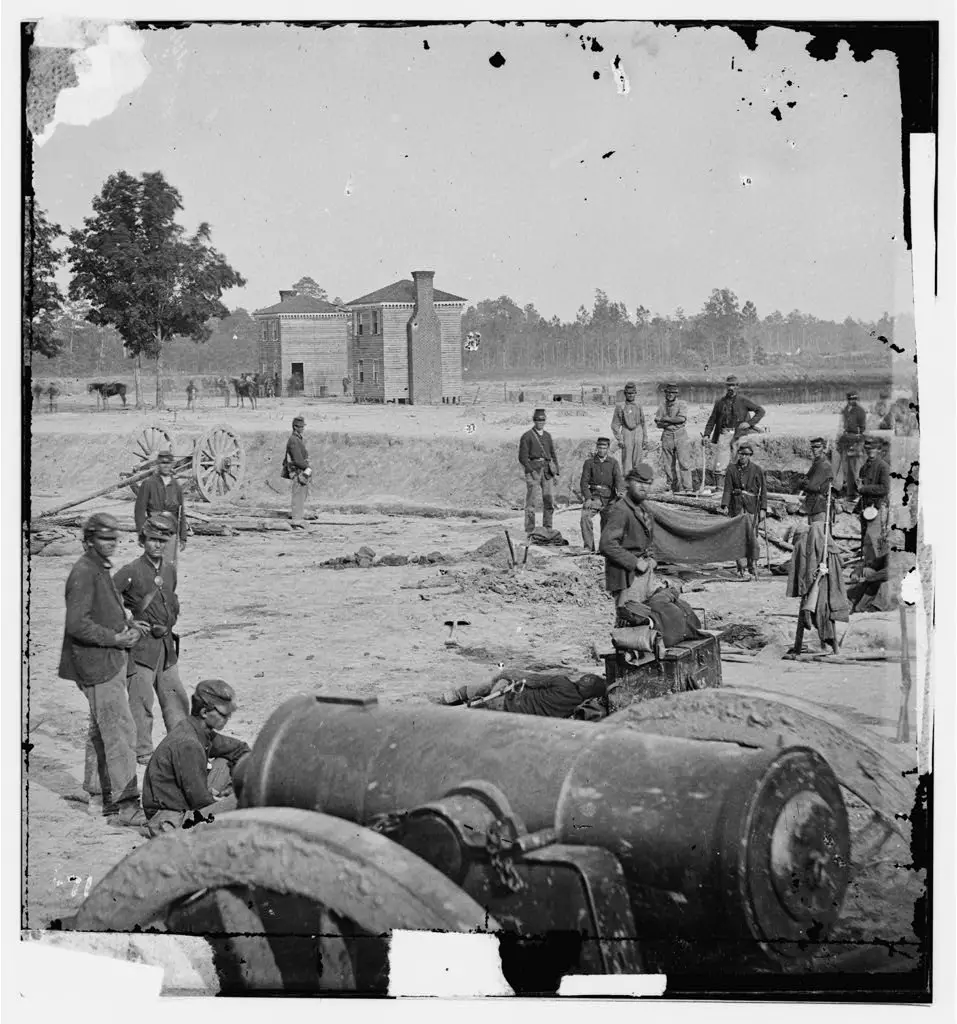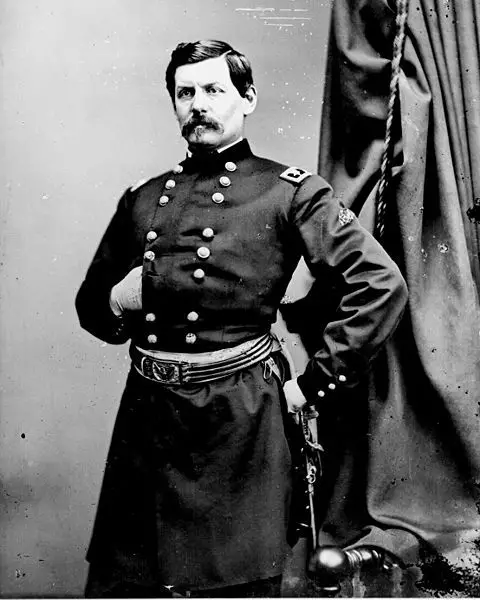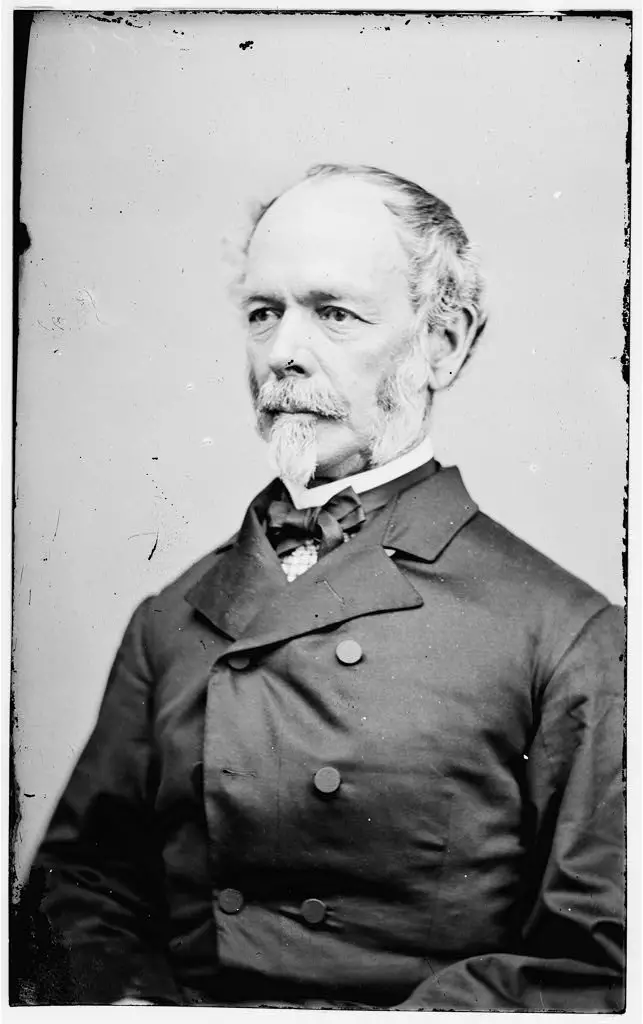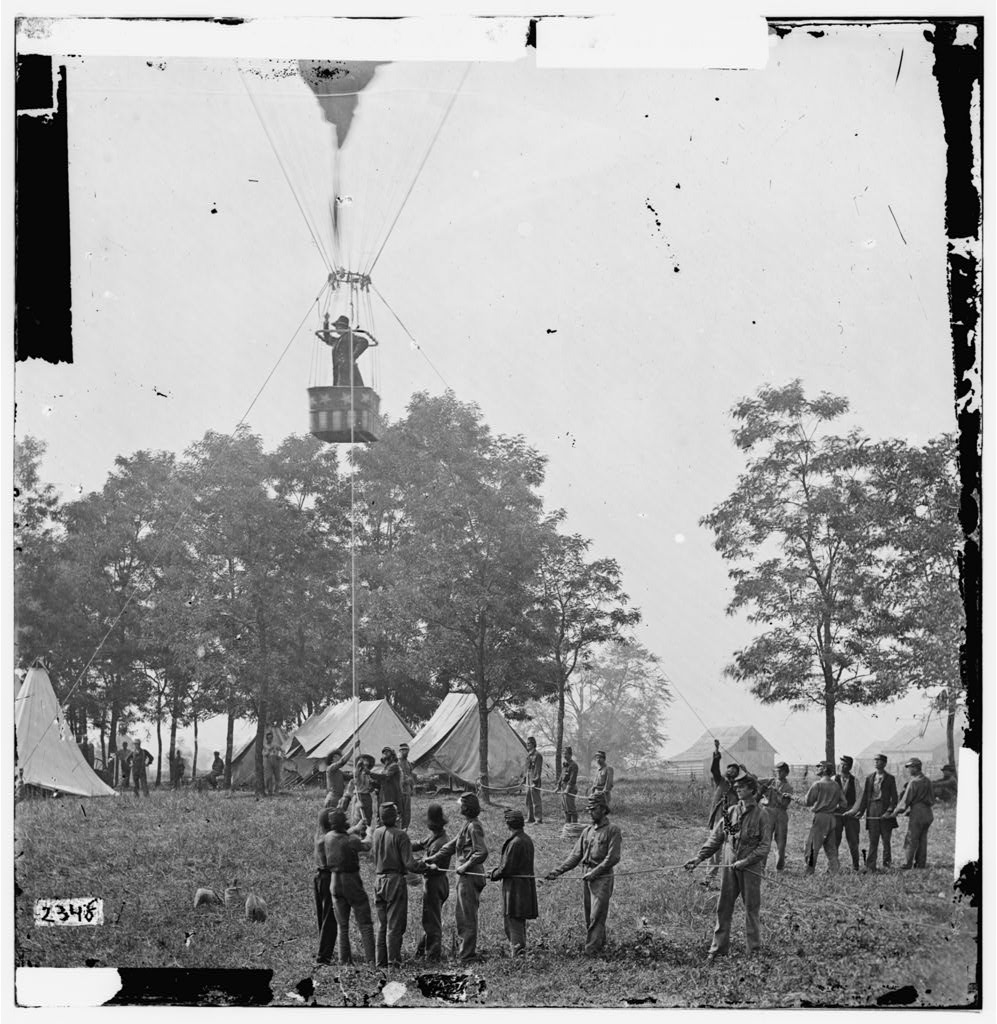The Battle of Seven Pines (also called the Battle of Fair Oaks, Battle of Fair Oaks Station) was fought on May 31st to June 1st, 1862, in Henrico County, Virginia.
At this point in the Civil War, Seven Pines was one of the bloodiest battles of the war, second to the Battle of Shiloh which had occurred eight weeks prior. It would also lay the foundation for the Confederates to be able to push the Union back North.

Battle of Seven Pines – 32 Pounder Field Howitzer
Battle of Seven Pines/Fair Oaks Information
The Battle of Seven Pines was fought by the Union Army of the Potomac under Major General George B. McClellan and the Confederate Army of Northern Virginia commanded by General Joseph E. Johnston.
Part of the Union’s Peninsula Campaign, the Battle of Seven Pines was the Army of the Potomac’s attempt to try and take the Confederate capital of Richmond; the Confederates sought to defend the city from the Northern offensive. There was no conclusive victor of the battle as neither side accomplished anything significant.
Union Commanders
The Union commanding officer was Major General McClellan, moving troops towards the Confederate capital of Richmond

Union General George B. McClellan
Subordinate Union Commanders:
- Edwin V. Sumner
- John Sedgwick
- Silas Casey
- Fitz John Porter
- Israel B. Richardson
- Erasmus D. Keyes
- Philip Kearney
- Darius N. Couch
- William B. Franklin
- Samuel P. Heintzelman
Confederate Commanders
The Confederate commanding officer was General Joseph Johnston, who posted the Army of Northern Virginia on the outskirts of Richmond in defensive points along the Chickahominy River.

Confederate General Joseph Johnston
Subordinate Confederate Commanders:
- Gustavus W. Smith (became temporary commander after Johnston was wounded)
- Lafayette McLaws
- David Rumph Jones
- John B. Magruder
- H. Hill
- James Longstreet
- Richard H. Henderson
- Robert Rhodes
- Gabriel Rains
- William H.C. Whiting
What Happened at the Battle of Seven Pines?
As the Union moved into a position less than seven miles from the Confederate capital of Richmond, they were preparing to launch an assault to take the city and, potentially, cripple the Confederacy. Knowing the Confederate force would be easily overwhelmed if they engaged the Union army head on, Confederate General Johnston planned a counteroffensive against the two farthest forward Union divisions.
The commanders of the two Union detachments, Brigadier Generals Keyes and Heintzelman, had moved their men to the crossroads of Seven Pines. Heavy rains muddied the roads and swelled the Chickahominy River, cutting off the two Union divisions from the remainder of the Union army, leaving them open to attack from the Confederate forces.
The battle was launched on the morning of May 31st, 1862, but it was haphazard and fraught with mismanagement on both sides and without a clear victor. The fighting itself began hours late and only after one of the Confederate commanders, Major General Hill, grew exasperated with the delay.
With bad weather, misplaced troops, separated divisions, rickety and collapsing bridges, and McClellan being bed ridden due to a chronic malaria flare up, the Union was open to attack and unable to reinforce their units easily despite their advantages of having more men, artillery, and aerostats (air balloons).

Professor Thaddeus S. Lowe in the Observation Balloon Intrepid During the Battle of Seven Pines-Fair Oaks
The Confederate Army did not fare any better: Johnston was delayed in starting his assault, Huger did not know when to launch the offensive, Smith was sick, and Longstreet inadvertently brought his men up the wrong road and had to backtrack to make it to the battle. General Johnston was near the fighting but could not figure out exactly where the battle was taking place.
General Johnston would not be involved in the fighting until about three hours into the battle, which was already delayed by the late start, due to a miscommunication with his forces and would later be wounded and removed from the field.
The Confederate assault began with a charge led by Hill’s division on the open Union units and did successfully push back Brigadier General Keyes and his Federal IV Corps, causing heavy casualties on the Union side.
The 100th and 81st New York battalions were overpowered, and Brigadier General Casey’s inexperienced but fearsome troops were unable to hold the line against the rebel forces and driven back into a retreat. The Confederates called for reinforcements due to their own losses but were not given many at first, primarily due to issues on the field.
The Union forces were eventually able to bolster their own line and establish a solid position with the arrival of the III Corps under Brigadier General Sickles and Brigadier General Sedgwick’s division of the II Corps as the Southern army reinforced their own side with more men, who slowly joined the fray.
The fighting continued for hours until nightfall with scattered skirmishes across the grounds and reinforcements filling in as they were able where they could; Johnston was wounded and pulled from the field as dusk fell.
The Confederates, led now by Major General Gustavus W. Smith, were sent out in the morning to attempt a second assault on June 1st but could not gain any ground against the Union. Smith faltered through his decision making and the Union stood their ground. By 11:30am in the morning, the attack was called off and the battle ended.
How Long Did the Battle of Seven Pines Last?
The fighting at Seven Pines lasted from Saturday May 31st until Sunday June 1st, 1862. It was supposed to have begun on the early morning of May 31st but due to miscommunication, bad weather, and mismanagement, the offensive Johnston had planned to launch against the Union was not begun until about 1pm when Hill attacked Casey’s division.
The battle went on into the evening, quieting down with the arrival of nightfall. The conflict was reignited around 6:45am with the Confederates resuming their attack on the Federal position. The fighting on the second day was not as long but nonetheless brutal with casualties falling on both sides, continuing until around 11:30am when the exhausted Confederates called off the assault and the fatigued Union troops slumped into their defenses.
What Was the Outcome of the Seven Pines?
There was no conclusive victor of the Battle of Seven Pines. Both the Confederate Army and the Union Army proclaimed victory for their corresponding sides but neither side had successfully achieved any major objective or had overwhelming casualties comparatively.
After the battle of Seven Pines General Robert E. Lee, was given command of the Army of Northern Virginia, he helped lead to the successes of the Confederacy at the Seven Day Battles in the summer of 1862 and skirmishes pushed the Union back and away from Richmond. The Union would not get this close to Richmond again until the very end of the war in April 1865.
The total number of casualties of the Battle of Seven Pines was 11,165. While the numbers favored the Union with fewer dead and wounded, both the Confederate and Federal armies dealt with heavy losses suffered through their respective divisions that were felt throughout both armies.
Who Fought in the Battle of Seven Pines?
The Army of the Potomac was commanded by Major General George B. McClellan, who fell ill on the day of the battle, forcing him to command his army from his cot.
General Joseph E. Johnston commanded the Confederate Army of Northern Virginia until his injuries removed him from the field and he was replaced by Major General G.W. Smith.
Why Was it Called the Battle of Seven Pines?
Confederates called it the Battle of Seven Pines. The name of the battle is best known because of its location. The fighting took place on the outskirts of the Confederate capital of Richmond along the Chickahominy River and the York and Richmond River Railroad. A lot of the fighting occurred at the intersection of Seven Pines, so named after a cluster of seven pine trees at the crossroads of Charles City Road, Williamsburg Road, and Nine Mile Road.
For the Union, the best combat they engaged in during the two-day battle occurred near the Fair Oaks Station. It was where Sumner’s division under Sedgwick’s command was able to cross the river in time to help stop Johnston’s advance on their position. Johnston was wounded in this engagement and had to be removed from the field.
Why Was the Battle of the Seven Pines Important?
The Battle of Seven Pines was an important battle of the Civil War for multiple reasons.
- First: It was an inconclusive battle with neither side successfully taking any great amount of ground nor accomplishing any goal.
- Second: It was the closest the Union would get to taking Richmond and they would not get as close as they did until the end of the war in 1865.
- Third: It would be the beginning of the end for the Peninsula campaign due to its inability to successfully undermine, destroy, or cripple the Confederacy.
- Fourth: It was also how General Robert E. Lee would be named the commander of the Army of Northern Virginia and lead to a shift in power for the military arm of the Confederacy.
Under Robert E. Lee, the Confederates were able to effectively push the Union back beyond the borders of Richmond and then further beyond the James River after the Seven Days Battles in the summer of 1862.
Lee then restructured the Confederate forces, reassigning and reforming battalions to compensate for their casualties. By doing so, Lee was able to reconfigure the Confederate army and push the Union back over the course of the summer and early fall, eventually defeating the Union at the Second Battle of Bull Run and forcing the Federal troops from the Confederate occupied Virginian Peninsula entirely.






























